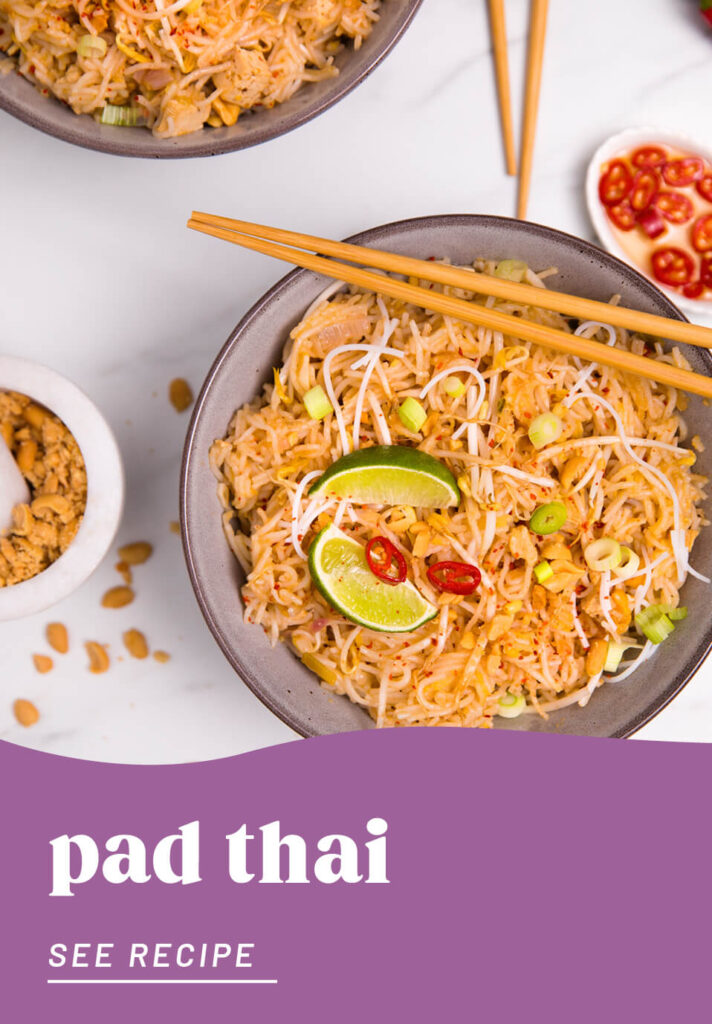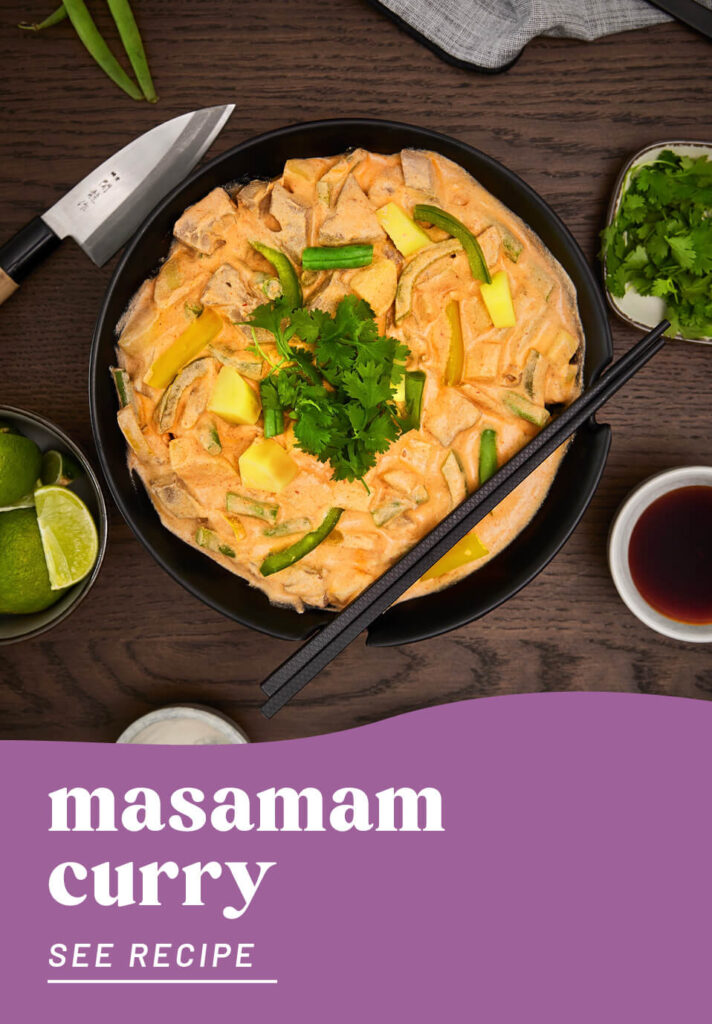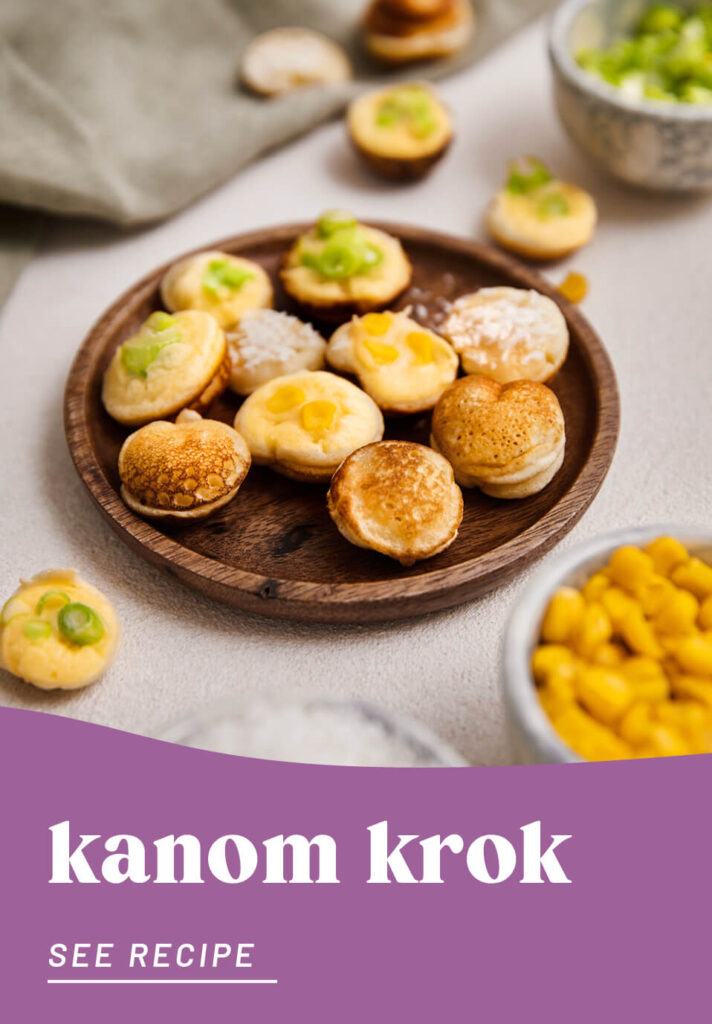VEGAN WORLDTRIP
Welcome to Thailand

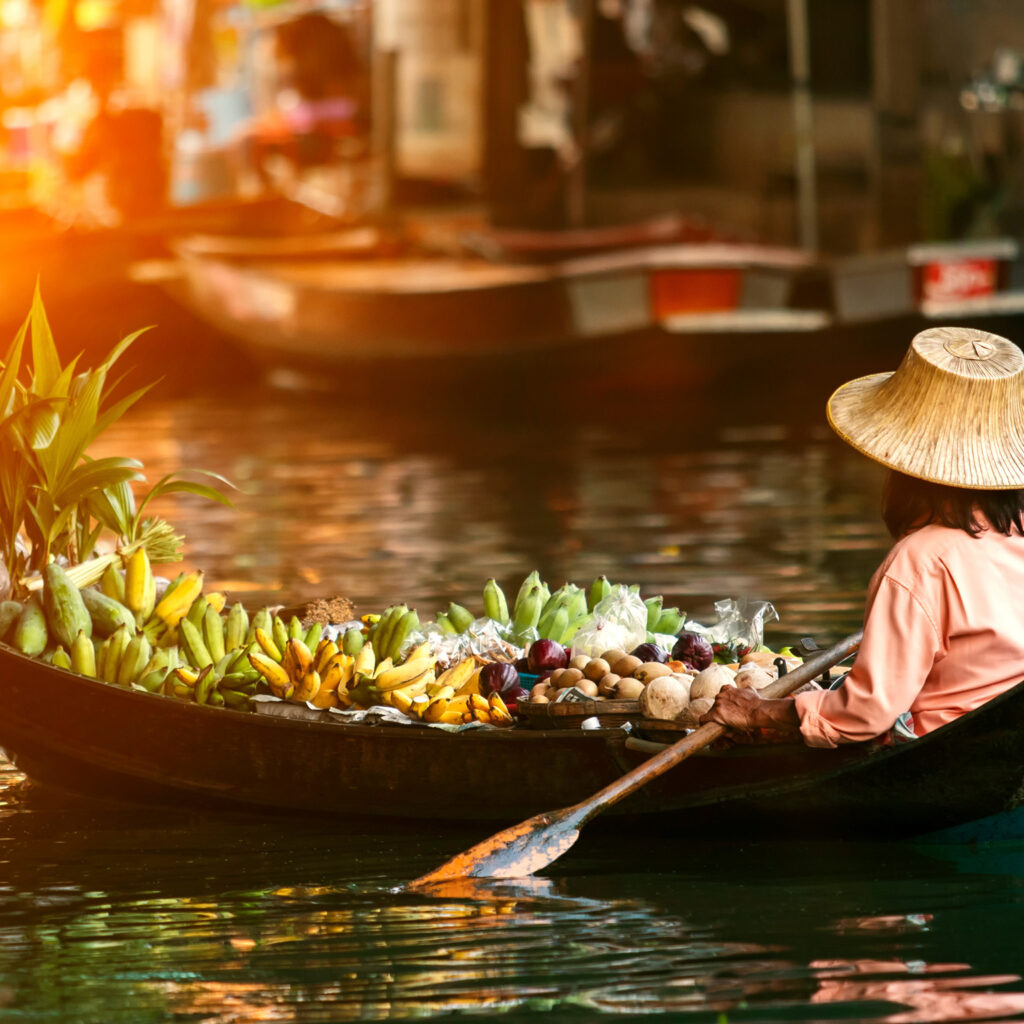
My first really good Thai curry is something I’ll never forget. It was some time around the turn of the millennium, and it so happened that life had gifted me a bit of time between finishing school and starting what I was planning to do next. I knew I wanted to use this time to get to know the rest of the world a bit better. So, as was all the rage in the early 2000s, I booked a flight to Bangkok. As soon as I arrived at Don Mueang Airport, I felt the culture shock that every tourist experiences when they visit an Asian city for the first time: the temperatures… the humidity… the smog. All the new smells… the unfamiliar language… the colorfully decorated tuk-tuks. Chaotic traffic… bare electricity cables… Buddhist monks with monkeys perched on their shoulders! I was very relieved once I had reached the hostel safely (which was, of course, in Khao San Road), and could hardly wait to get out and explore the city. When I ventured out in search of dinner, I ended up in one of the legendary night markets. There I found hundreds of street food stands offering the most exotic dishes I had ever seen. I decided to stick with a dish which seemed familiar – it looked a bit like strips of meat with vegetables and rice. I now know that it was a red Thai curry. The street seller asked me if I wanted it “European” or “Thai style”. Unaware that she was referring to how spicy it would be – and with hindsight, very daringly (!) – I went for “Thai style”. The first bite set off a taste explosion in my mouth which I like to call “LSD for the tongue”. Sweet, salty and sour flavors I had never tasted before came together in perfect harmony in my mouth. The fiery heat of chili danced on my taste buds, expertly balanced out by mild coconut milk. Crispy and velvety textures took turns to delight my tongue – every bite was a revelation! It was this culinary experience that sealed the deal on my love for Thai cuisine forever.
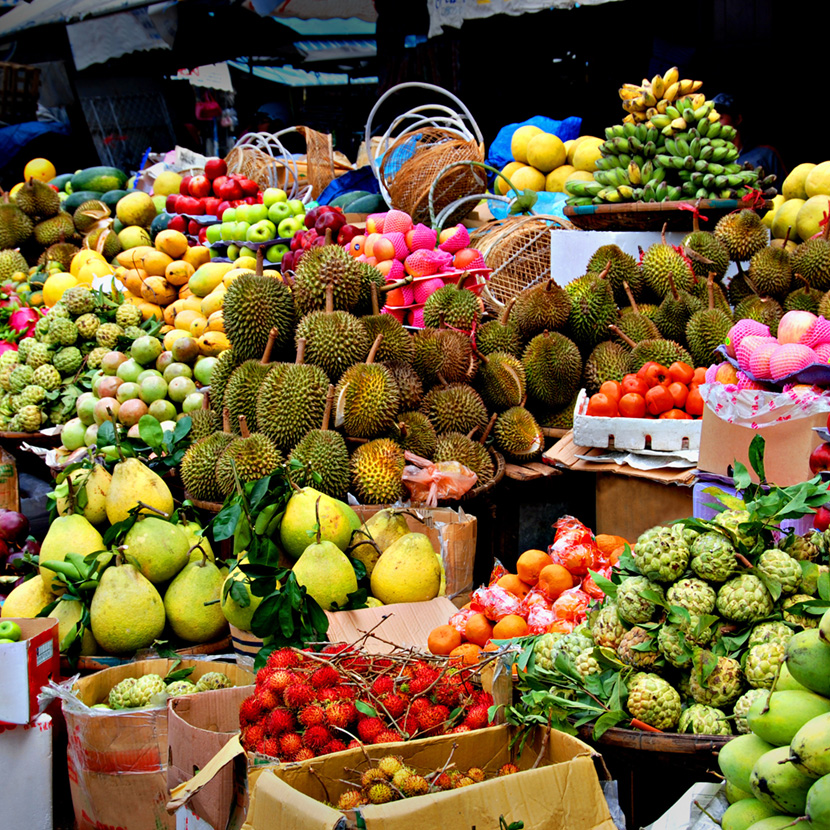

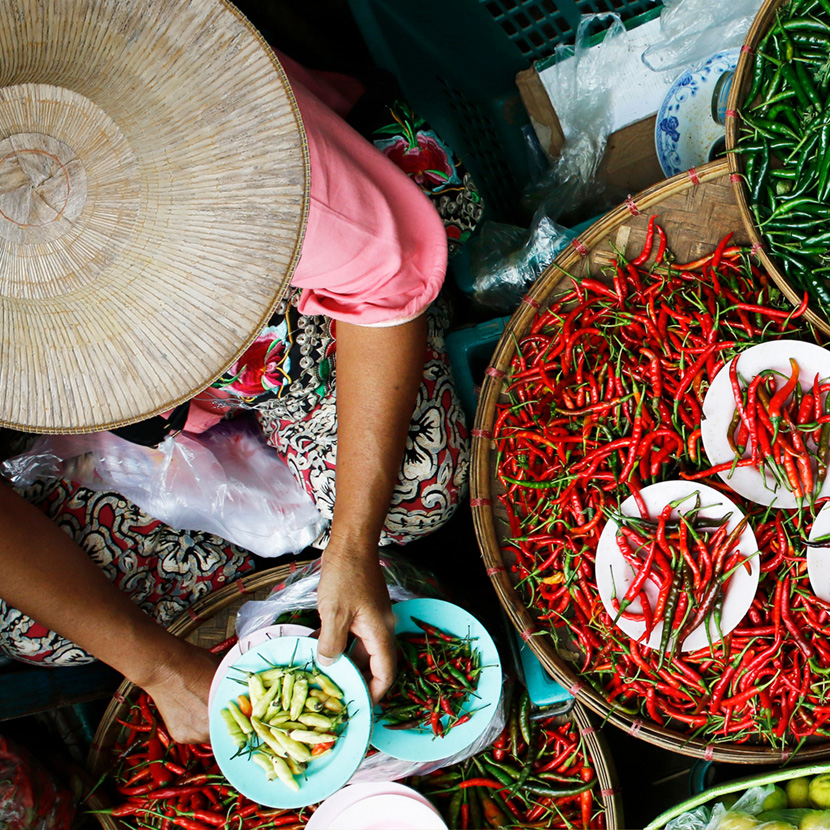
the flavours of thailand
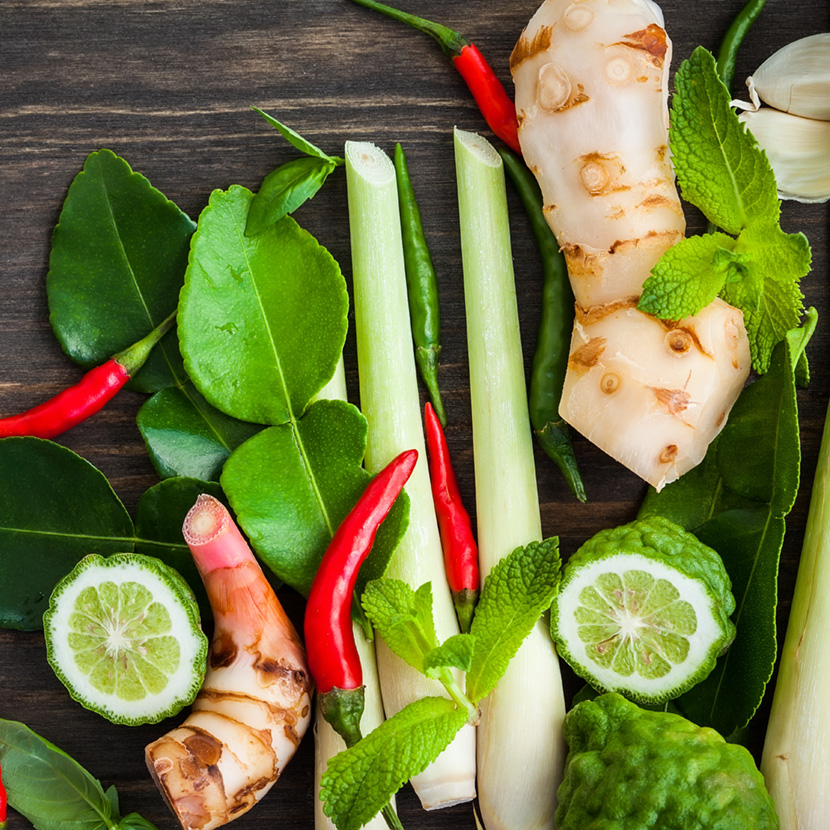
What is the essence of Thai cuisine? Which ingredients create that typical flavor which will whisk us away to a market in Bangkok? To understand Thai cuisine, we need to identify which typical ingredients are responsible for the main flavor categories of sweetness, acidity and saltiness. Sweetness usually comes from palm sugar, which – as the name suggests – is made from the juice of various types of palm tree. It is less sweet than conventional caster sugar and has a slightly malty, caramel flavor. If you can’t get hold of palm sugar, you can use cane sugar or coconut blossom sugar instead. The acidity in Thai cuisine usually comes from limes. The little green citrus fruit is somewhat less sour, and slightly fruitier than European lemons. Alternatively, tamarind is often also used to lend acidity to a dish. Thai cooks often do not use conventional salt at all. The saltiness in their dishes – which can be described as “funky”, to say the least – is usually from fish sauce. As the name suggests, fish sauce is made from fermented pieces of fish, has a smell which takes a lot of getting used to – and of course, it isn’t vegan. Plant-based alternatives exist, however, such as our No Fish Sauce or light soy sauce. The heat in Thai dishes comes from chili. And by the way, chilis are as ubiquitous in Thailand as potatoes are in Germany! They are to be found in every Thai dish – yet as a fruit, they are not indigenous to southeast Asia. The Portuguese were the first to import chilis in the 17th century. Thai cuisine is also shaped by the ingredients that grow in the country. The absolute staple is rice, which is grown in the north of the country in particular. Long grain jasmine rice is particularly popular, but the more meaty sticky rice is also used in many recipes. Alongside rice, you will find exotic vegetables such as Thai aubergines, straw mushrooms or mung bean sprouts, as well as familiar veg like bell peppers, spring onions and beans. Flavors and aromas are provided by traditional herbs and spices such as Thai basil, coriander and galangal, which are, in Europe, often only available from specialist Asian supermarkets. And last but not least, a special mention goes to two other leading roles – coconut and peanut. Both of these nuts find their way into many Thai dishes – whether as oil, as milk, whole, chopped or desiccated.
Being vegan in Thailand
Thai cuisine tends to feature a lot of meat, but the traditional recipes are wonderfully easy to veganize with plant-based alternatives. The trend towards a plant-based diet has arrived in Thailand – though this was mainly brought about by tourism. The small town of Pai is a Mecca for friends of plant-based diets. It’s to the west of Chiang Mai in the north of Thailand, in the middle of the breathtaking mountain region of Mae Hong Son. Nestled among canyons, waterfalls, hot springs and lush green rice paddy fields, the village has established itself as the vegan tourist capital of Thailand. A highlight for all street food fans is the vegan food market in the evenings. From classics like curries to nan rolls and chocolate balls, you’ll find plenty to make your vegan foodie heart skip a beat. And for a yummy dessert, make sure you try Kanom krok – small Thai pancakes made from rice and coconut (see below for recipe). Good to know: Buddhist monks are vegan! It’s for them that the “Jay Food Seal” was created, which labels plant-based products in supermarkets or plant-based restaurants and food stalls.
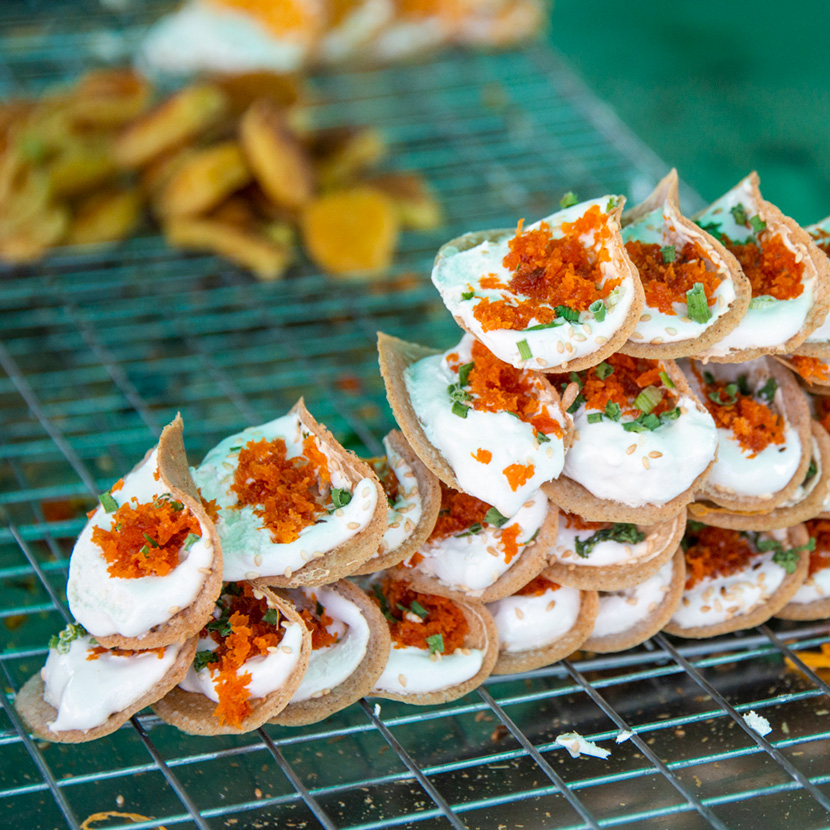
kaeng = curry = ♥
Of course, Thailand has much more to offer than just curry (kaeng in Thai) – but the dish is to be found on every menu and is Thailand’s best-known dish. But first things first: there’s no curry in this curry. The curry powder in your spice rack is an ingredient from Indian cuisine and is not related to Thai curries in any way. The latter get their flavor from a spice paste which can either be made fresh from chili, ginger, coriander and other ingredients, or bought ready-made. Vegans need to take a closer look at the ingredients list on ready-made curry pastes, as some contain fish sauce or shrimp oil. This isn’t the case with the ones you’ll find in our online shop, of course. There are many different types of kaeng which vary in terms of their ingredients and level of spice. The best known is surely red Thai curry, which has a medium level of heat. Its main ingredients are lemongrass, onions, kaffir lime and galangal. Green Thai curry is hotter, while yellow Thai curry is milder. So-called “Muslim” Massaman curry is also popular. It’s less spicy, but sweet and aromatic. And last but not least, we mustn’t forget the curry from the island of Penang, which is moderately spicy, tastes fresh and is traditionally served with peanuts.
Thailand’s national dish: Pad Thai
Even though curries are the best-known dishes of Thai cuisine, the country’s national dish is actually Pad Thai. In the year 1939, World War II was raging and the Kingdom of Siam became the Republic of Thailand. The young nation was suffering shortages of ingredients (rice) and was in need of a national identity. Prime Minister Phibun therefore had a new national dish created which was meant to make it popular to eat noodles instead of rice. The dish also had to feature ingredients from all the different provinces of Thailand in order to appeal to Thai people’s love for their homeland. He named it Pad Thai, which translates to “Fried Thailand”. Pad Thai enjoyed great popularity and soon there were street stalls all over the country selling it. The oldest of these, which still exists today, has been around since the 1940s and is called Thipsamai. It has come a long way since its days as a street food stall to become a formidable chain with four restaurants in Bangkok, but the recipe is still the same as that written down by Ms. Samai in 1940. You can find the original recipe here.
So what’s for afters?
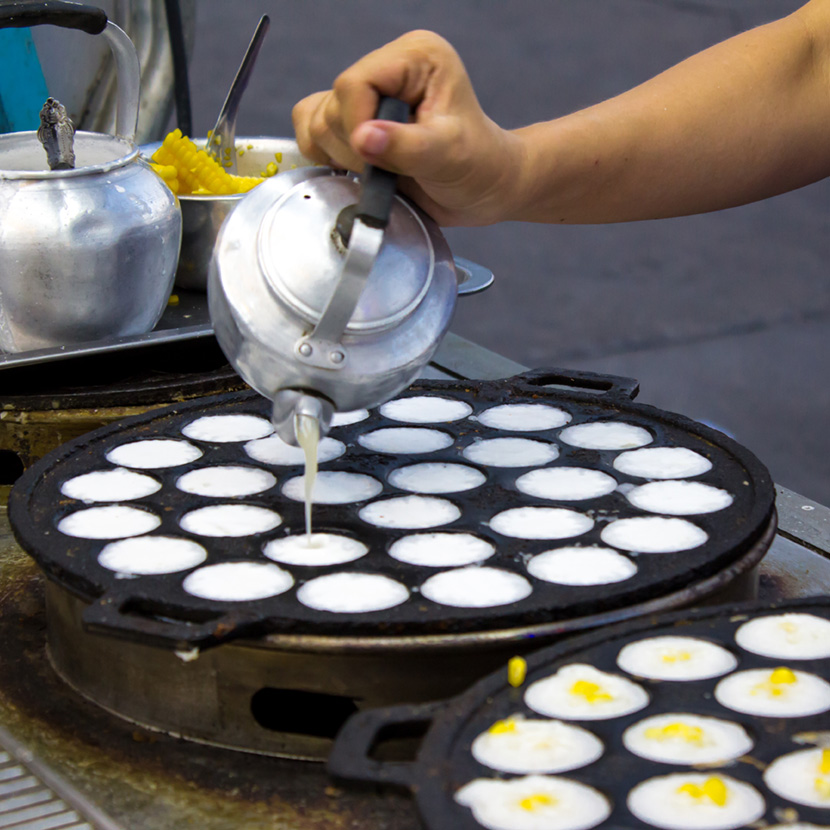
When most of us think of Thai food, sweet dishes are probably not what springs to mind first. Thai people do love sweet food, but they tend to enjoy it as a snack. Many Thai desserts feature exotic fruits such as mango, banana, kiwi and papaya. The flavors of these tropical fruits are particularly refreshing after a spicy curry. But coconut and, of course, rice, also have a role to play in Thai desserts, such as the well-known sticky rice with mango. But today, I want to introduce you to another dish which is bound to win a place in your heart. Kanom Krok is a type of pancake which is filled with coconut pudding. It’s a very popular street food in Thailand which can be found in almost any market. Kanom Krok are golden brown and crispy on the outside, with a soft, pudding-like center. They taste fantastic – sweet and very aromatic – and are easy to make. Two different types of batter need to be made for Kanom Krok, which are then cooked one after the other in a special Kanom Krok pan, before being placed together. If you don’t have a Kanom Krok pan, you can use a normal pan and round cookie cutters.
the recipes
